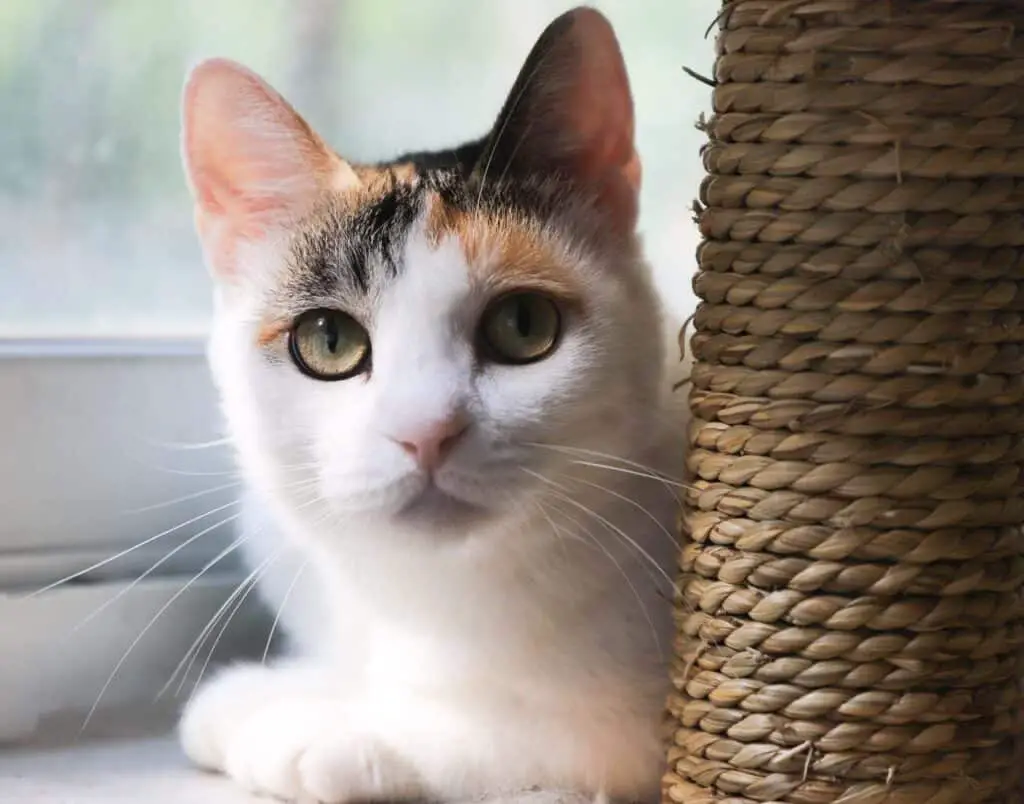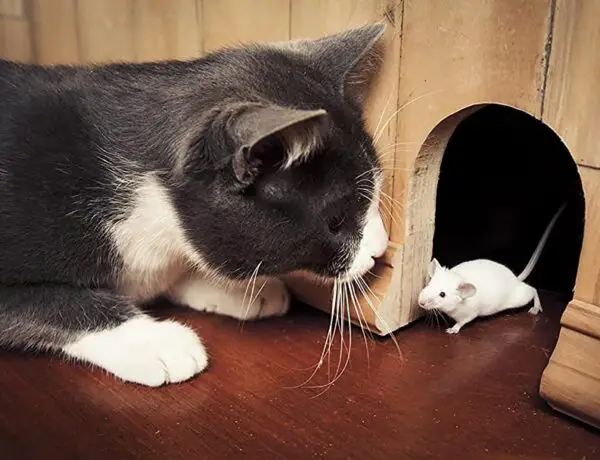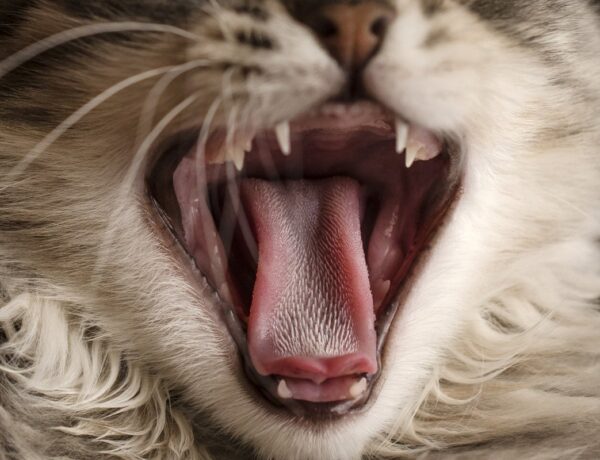Introduction
How Rare Are Male Calico Cats: In the intricate tapestry of the feline world, the calico coat pattern stands as a mesmerizing anomaly. With its vibrant patches of orange, black, and white, the calico pattern has captivated cat enthusiasts and scientists alike for generations. Yet, within this captivating array of colors, a peculiar rarity exists—one that defies the norms of feline genetics. This rarity is none other than the male calico cat.
Traditionally, calico cats have been primarily associated with females due to the intricate genetic interplay behind their distinctive coat pattern. The genetic basis of the calico pattern involves a combination of X and Y chromosomes, leading to the conventional assumption that male calico cats are exceedingly rare, if not impossible, to find. However, the intriguing twists of genetics and biology occasionally grant us the sight of a male calico, sparking curiosity and scientific inquiry into the mechanisms that underpin this unexpected phenomenon.
This exploration delves into the realm of feline genetics, color inheritance, and the astonishing exceptions that challenge our understanding of the natural world. By unraveling the complex factors at play, we can begin to grasp the rare instances where male calico cats hair emerge, as well as the genetic intricacies that contribute to their existence. Through this journey, we aim to shed light on the enigmatic world of male calico cats, unraveling their mystery one genetic thread at a time.

Why are male calico cats so rare?
Since male cats have only one X chromosome (XY), they typically inherit either the gene for black or orange, but not both. This is why male calico cats are scarce. However, there is a rare genetic anomaly called Klinefelter syndrome, where a male cat can have an extra X chromosome (XXY or XXXY).
The Genetics Behind Coat Color
To comprehend the rarity of male calico cats, one must first grasp the basics of feline genetics. Coat color in cats is determined by multiple genes, with two types of pigment—eumelanin (black) and pheomelanin (red/orange)—creating the colorful palette seen in various patterns. Additionally, the X and Y chromosomes play a pivotal role in determining a cat’s sex. Females have two X chromosomes (XX), while males have one X and one Y chromosome (XY).
The Role of X Chromosome Inactivation
The rarity of male calico cats can be attributed to a phenomenon known as X chromosome inactivation. In females, one of the X chromosomes in each cell becomes inactive, forming a structure called a Barr body. This is nature’s way of compensating for the double dose of X-linked genes. Since the genes responsible for coat color are carried on the X chromosome, this process results in the distinct patchwork of colors seen in calico cats.
The Exception: Klinefelter Syndrome
Despite the complex genetic dance that usually leads to female calico cats, male calicos do exist, albeit exceptionally rarely. The main explanation for their existence lies in a genetic anomaly called Klinefelter syndrome, where a male cat carries an extra X chromosome (XXY) instead of the typical XY configuration. This anomaly allows for X chromosome inactivation to take place, resulting in a mosaic of colors similar to the calico pattern.
Chimerism and Mosaicism
Another mechanism behind male calico cats involves chimerism and mosaicism. Chimerism occurs when two different embryos merge in the early stages of development, resulting in a single organism with cells from both embryos. Mosaicism, on the other hand, involves genetic mutations occurring in some of the cat’s cells but not others. These phenomena can lead to the manifestation of the calico pattern in a male cat’s coat.
Are male calico cats common?
Almost all calico cats are females. You may have heard that calico cats are always female, but this is a myth. Male calico cats are very rare, with only around 1 in 3,000 calico cats being male, but they do exist. The reason for this is based on chromosomes.
Understanding the Basics of Calico Cats
To appreciate the rarity of male calico cats, it’s important to comprehend the genetics underlying the calico coat pattern. Calico cats boast a unique mix of black, orange, and white patches on their fur. This distinct pattern is determined by the interplay of various genes, with X and Y chromosomes playing a critical role.
Sex Chromosomes and Coat Color Genes
In the world of genetics, males possess one X and one Y chromosome (XY), while females have two X chromosomes (XX). The genes responsible for coat color, including the vibrant hues of calico patterns, are situated on the X chromosome. As such, female cats with two X chromosomes can exhibit a mosaic of colors, leading to the classic calico coat.
The Rare Exception: Male Calico Cats
The rarity of male calico cats stems from the intricate way in which their genetic makeup aligns with their coat color. Typically, male cats have a single X chromosome, making them less likely to exhibit the calico pattern. However, rare genetic anomalies can give rise to male calico cats.
What are the odds of getting a male calico cat?
Not true in either case. But male calicos are rare: Only one out of every 3,000 calico cats is male, according to a study by the College of Veterinary Medicine at the University of Missouri.
Genetic Basics of Calico Cats
Understanding the odds begins with grasping the genetic basis of the calico coat pattern. Coat color in cats is determined by multiple genes, and the X and Y chromosomes play a vital role in defining a cat’s sex. The genes responsible for the calico pattern are situated on the X chromosome, while the Y chromosome carries genes determining male traits.
Male vs. Female Odds
The conventional calico pattern is mostly observed in female cats due to their XX chromosome makeup. Female cats have two X chromosomes, enabling the intricate mosaic of colors to manifest through X chromosome inactivation. Male cats, with their XY chromosomes, have only one X chromosome, making it statistically less likely for them to exhibit the classic calico pattern.
Klinefelter Syndrome and Odds
The odds of getting a male calico cat increase with the presence of genetic anomalies, primarily Klinefelter syndrome. In this condition, a male cat inherits an extra X chromosome, resulting in an XXY configuration. This extra X chromosome can undergo inactivation, leading to a calico-like pattern. However, Klinefelter syndrome itself is relatively rare, occurring in approximately 1 in 1,000 male cats.
Chimerism and Mosaicism Factors
Another avenue through which male calico cats can emerge involves chimerism and mosaicism. These phenomena result from genetic mutations occurring during early development, leading to cells with different genetic makeup. In cases where these mutations affect coat color genes and result in mosaic patterns, male calico cats can come into existence.
Is calico cat a rare gender?
According to Bell, research shows that fewer than 1 in 1,000 calico cats are male. This can be chalked up to the female’s extra X chromosome.
Understanding Calico Coat Patterns
Calico is not a breed of cat, but rather a term used to describe a particular coat pattern. Calico cats boast a mixture of white, black, and orange (or sometimes gray) patches on their fur. The specific arrangement and intensity of these colors can vary, making each calico cat a unique work of art.
Gender and Calico Patterns
Traditionally, calico cats were thought to be predominantly female due to the genetic intricacies associated with the pattern. The calico coat pattern is a result of the interaction between various genes on the X chromosome. Since female cats have two X chromosomes (XX), they can express the calico pattern through a process called X chromosome inactivation, leading to the mosaic of colors.
The Rare Male Calico Cat
While calico patterns are more commonly seen in female cats, male calico cats do exist—albeit as a rarity. This rarity is due to the fact that male cats typically possess one X and one Y chromosome (XY), making it less likely for them to inherit the combination of genes necessary for the calico pattern. However, male calico cats can occur under specific genetic conditions, such as Klinefelter syndrome (XXY) or chimerism, which allow for the expression of the calico pattern.
Gender and Prevalence
In terms of prevalence, female calico cats still outnumber their male counterparts. This is primarily because the genetic combination required for the calico pattern is naturally more common in females. Additionally, the presence of two X chromosomes increases the likelihood of the necessary genetic interplay.
Are male calicos infertile?
All but approximately one in three thousand of the rare calico or tortoiseshell male cats are sterile because of the chromosome abnormality and breeders reject any exceptions for stud purposes because they generally are of poor physical quality and fertility.
Understanding Male Calico Genetics
To comprehend the potential fertility of male calico cats, it’s crucial to revisit the genetic underpinnings of their existence. Calico cats typically exhibit a mosaic of colors due to the interaction of genes on the X chromosome. In female cats, which possess two X chromosomes (XX), one X chromosome is inactivated in each cell, allowing for the expression of the calico pattern. In males, who have one X and one Y chromosome (XY), the conventional calico pattern is rarer due to the absence of a second X chromosome.
The Role of Genetic Anomalies
While male calico cats are an exceptional rarity, certain genetic anomalies can give rise to their existence. One such anomaly is Klinefelter syndrome, where a male cat has an extra X chromosome (XXY). This extra X chromosome can undergo inactivation, resulting in the calico-like coat pattern. However, the presence of Klinefelter syndrome doesn’t necessarily render a male cat infertile.
Fertility in Male Calico Cats
The relationship between male calico cats and fertility isn’t a straightforward one. While Klinefelter syndrome can lead to the calico pattern in male cats, its effects on fertility can vary. In some cases, male calico cats with Klinefelter syndrome may exhibit reduced fertility due to disruptions in their reproductive organs and hormonal imbalances. However, there have been instances of male calico cats with Klinefelter syndrome successfully reproducing.
Individual Variability
Just as with any genetic anomaly, the effects on fertility can be influenced by a range of factors, including the specific genetic makeup of the individual cat, the severity of the anomaly, and the presence of other genetic or health-related issues.
Are calico cats lucky?
Calico Cat Facts
Calico cats are thought to bring good luck in Japan. In past years, Japanese sailors would travel with Calicos onboard their ships for protection. In the U.S. and U.K., male Calico cats have been thought to be especially lucky because they are so rare.
Calico Cats in Japanese Culture
In Japanese folklore, calico cats—referred to as “Maneki Neko” or “beckoning cats”—are renowned symbols of good fortune and prosperity. Statues or figurines of these cats are commonly found in businesses and homes, their raised paw believed to beckon luck and wealth. The calico pattern, with its blend of colors, is thought to amplify the positive energies associated with these figurines.
Tracing Back to Ancient Egypt
In ancient Egypt, cats in general were revered and considered sacred animals. They were believed to bring protection and good luck to their households. While the association between calico cats and luck might not have been as pronounced in ancient Egyptian culture, the reverence for cats certainly contributed to the aura of positive symbolism.
Regional and Cultural Beliefs
The notion of calico cats being lucky extends to other cultures as well. In some regions, these cats are believed to ward off evil spirits or bring prosperity to their owners. However, not all cultures view calico cats as uniformly lucky. In some places, the perception might be different, influenced by local beliefs and traditions.
Individual Beliefs and Interpretations
The question of whether calico cats are truly lucky is subjective and often tied to personal beliefs. Some individuals might consider themselves fortunate to have a calico cat as a companion, attributing positive qualities to their presence. Others might simply appreciate the unique and visually appealing nature of calico cats, finding their presence uplifting regardless of any perceived luck.
What is the rarest color of a cat?
Of all the cat colors, albino is the rarest. Albinism causes a complete lack of pigment, so cats have pink skin, white fur, and pale blue or pink eyes. In order to be albino, a cat must inherit two recessive genes for albinism (A/A), one from each parent.
The Elusive White Tiger
When it comes to sheer rarity, the white tiger claims its place as one of the most sought-after feline rarities. These majestic creatures are not a distinct breed but rather a result of a genetic mutation that occurs in Bengal tigers. With their striking white coats and mesmerizing blue eyes, white tigers are not only visually captivating but also hold a special allure due to their scarcity in the wild.
The Intrigue of Melanistic Cats
On the opposite end of the spectrum lies the world of melanism, a phenomenon where cats exhibit an abundance of dark pigment. The most well-known example of this is the black panther, which is typically a melanistic form of leopards or jaguars. While not a separate species, these all-black big cats are undoubtedly a rare sight and are often associated with a sense of mystery and stealth.
The Fascination of Odd-Eyed Cats
Another rarity that catches the eye is the presence of odd-eyed cats, which have two different eye colors—one blue and one of another color, often green or gold. This captivating trait is often seen in certain breeds, such as the Turkish Van and the Khao Manee. The genetic basis for this peculiarity adds to its mystique, making odd-eyed cats a sought-after rarity among cat enthusiasts.
Breed-Specific Rare Colors
In addition to these broader categories of rare cat colors, certain breeds exhibit specific and uncommon coat colors that contribute to their rarity. For instance, the “chocolate” color in Siamese cats is rarer than their more common seal and blue point counterparts. The “cinnamon” and “fawn” colors in the Abyssinian breed are also considered rare.
Are male calico cats aggressive?
A new study found that calicos and tortoiseshell cats are “more likely to hiss, bite, scratch, swipe at, and behave aggressively” towards humans than other breeds, the San Jose Mercury News reports. The study also found that black-and-white, and gray-and-white cats tend to be aggressive.
The Myth of Aggression
The stereotype of male calico cats being aggressive might stem from misconceptions or extrapolations based on rare occurrences. It’s important to note that aggression in cats, regardless of gender or coat color, is usually influenced by factors such as genetics, early socialization, environment, and individual personality.
Behavioral Factors
Aggression in cats can arise from a variety of factors, including fear, territorial instincts, past experiences, and medical issues. The presence of the calico pattern, whether in males or females, is not a direct cause of aggressive behavior. It’s essential to consider each cat as an individual with its own temperament and history.
Genetics and Aggression
Aggression is not linked to coat color or gender in cats. Instead, it can be influenced by genetic predispositions to certain behaviors. Breeding practices, early socialization, and the cat’s upbringing play significant roles in shaping behavior. Calico cats, male or female, do not possess genetic markers that inherently predispose them to aggression.
Socialization and Environment
Early socialization and positive experiences during a cat’s formative stages can have a profound impact on its behavior. Calico cats, like all cats, benefit from early interactions with humans, other animals, and various environments. Cats that are well-socialized tend to display more positive and friendly behaviors, regardless of their coat color.
Health and Aggression
Aggressive behavior in cats can sometimes be linked to medical issues. Pain, discomfort, or underlying health problems can lead to changes in behavior. It’s important to rule out any medical causes before assuming that aggression is solely tied to the cat’s gender or coat color.

Conclusion
In the captivating world of feline genetics, male calico cats stand as exceptional anomalies that intrigue, inspire, and challenge our understanding. The rarity of these unique creatures is a result of the intricate interplay of genes, chromosomes, and biological occurrences that create their distinct calico coat patterns.
Despite the conventional association of calico patterns with female cats due to their XX chromosome makeup, male calico cats do exist. The rarity of their presence arises from the complexities of genetics. The typical XY chromosome arrangement in males makes it statistically unlikely for them to inherit the combination of genes required for the calico pattern. Yet, under specific genetic anomalies like Klinefelter syndrome (XXY) and chimerism, male calico cats can emerge as living embodiments of the genetic variability nature has to offer.
The rarity of male calico cats, however, goes beyond numbers and probabilities. It serves as a testament to the intricate tapestry of life, where chance, genetics, and biology intertwine to produce astonishing exceptions. These enigmatic feline wonders spark curiosity, not only into their unique presence but also into the broader mechanisms that govern genetic expression and inheritance.
As we delve into the world of male calico cats, we uncover more than just their physical rarity. We discover the mysteries that continue to elude our complete understanding, reminding us of the boundless complexity inherent in the natural world. With every male calico cat that defies the norm, we are reminded that in the vast universe of genetics, surprises await those willing to unravel the threads of rarity and embrace the beauty of the unexpected.




No Comments